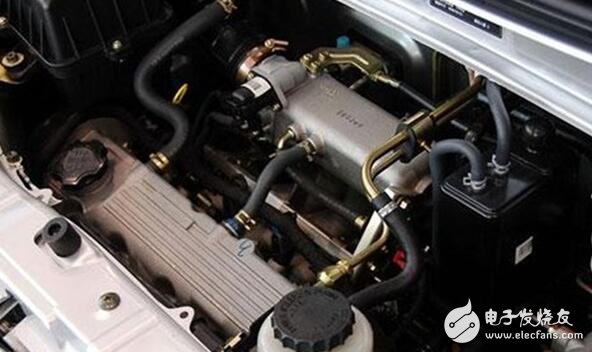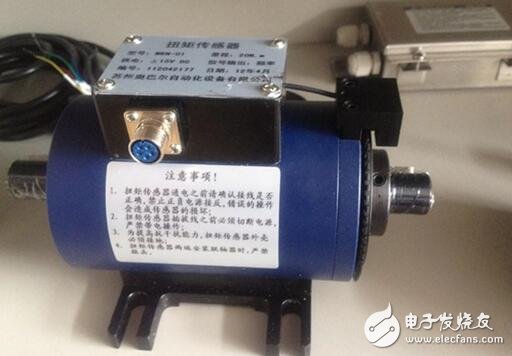The torque sensor is one of the important components of the electronically controlled power steering system. It is used to measure the magnitude and direction of the torque applied by the driver on the steering wheel and convert it into an electric signal. The power steering ECU receives this signal and the vehicle speed signal to determine the direction and magnitude of the auxiliary power, so as to control the steering torque at low speed. small. The steering torque is moderately increased at high speeds. Some sensors are also capable of measuring the size and direction of the steering wheel angle. Torque measurement systems are complex and costly, and many components are integrated. For example, Toyota cars integrate steering motors, torque sensors and steering columns to form a steering column assembly, which makes steering control more accurate and reliable. .
Torque sensor troubleshootingThe torque sensor is generally used to measure the magnitude and direction of the torque applied by the driver on the steering wheel and convert it into an electrical signal. The power steering ECU receives this signal and the vehicle speed signal to determine the direction and magnitude of the auxiliary power, so that at low speeds. The steering torque is reduced, and the steering torque is moderately increased at high speeds. It is one of the important components of the electronically controlled power steering system.

In addition, some sensors are also able to measure the size and direction of the steering wheel angle. Torque measurement systems are complex and costly, and many components are integrated. For example, Toyota cars integrate steering motors, torque sensors and steering columns to form a steering column assembly, which makes steering control more accurate and reliable. .
Torque sensors are currently available in both contact and non-contact versions: non-contact torque sensors and contact torque sensors
The non-contact torque sensor is also called a sliding variable resistance torque sensor. The contact torque sensor is equipped with a torsion bar between the steering shaft and the steering pinion. When the steering system is working, the torsion bar is measured by a slip ring and a potentiometer. The amount of deformation is converted into a voltage signal.

The non-contact torque sensor has two pairs of pole rings. When the relative rotation between the input shaft and the output shaft occurs, the air gap between the pole rings changes, thereby causing a change in the electromagnetic induction coefficient, and an induced voltage is generated in the coil. And convert the voltage signal into a torque signal. The advantage of the non-contact torque sensor is its small size and high precision.
In general, when the torque sensor is damaged or the performance is poor, the following types of faults may occur in the steering system:
1. Difficulty in steering; different steering torques or uneven steering torque;
2. The steering torque does not change with the speed of the vehicle or the steering wheel cannot be correctly corrected when driving;
3. The P/S warning light on the combination meter lights up.
Reasons for signal instability and processing methodsThe torque sensor often encounters unstable output signals during use, but there is no problem in sending the sensor back to the manufacturer for testing. What is the reason? In fact, there are many reasons why the torque sensor is unstable during use. The common three main aspects are as follows:
1. The torque sensor is not installed, and the shafts are not parallel. This will result in unstable signal output. The working sensor is easily damaged in such a state for a long time.
2, the power supply voltage is unstable, our torque sensor is generally plus or minus 15V dual voltage power supply also has 24V or other voltage supply, unstable supply voltage will also cause the output signal is unstable.
3. The interference of other machines beside the torque sensor. For example, if there is a frequency converter next to the torque sensor, it is easy to cause the output signal to be unstable. The solution is to add a 1:1 isolation transformer to the sensor's power supply.
The above is some simple troubleshooting methods for the torque sensor failure that Xiaobian brings to you, and some reasons for the failure analysis, I hope to help everyone!
With the advent of 5G era, people put forward higher requirements on all aspects of indoor coverage. Due to difficulties in deployment and limited capacity growth, the traditional Das solution is not suitable for the development trend of 5G. The 4G distributed pick-up station can support 5G NR through modification. Project implementation is relatively simple, can achieve 4 × 4. MIMO has excellent capacity and performance, suitable for a variety of scenarios of 5G indoor coverage. This paper studied the layout position of Pico RRU in distributed Pico base station construction scheme, and designed the Pico RRU automatic layout function based on genetic algorithm in the drawing, in order to improve the efficiency of indoor power distribution system design
ISDB Antenna,ISDB-T Antenna,ISDB Antenna for Car,IDSB antenna for Japan
Yetnorson Antenna Co., Ltd. , https://www.xhlantenna.com